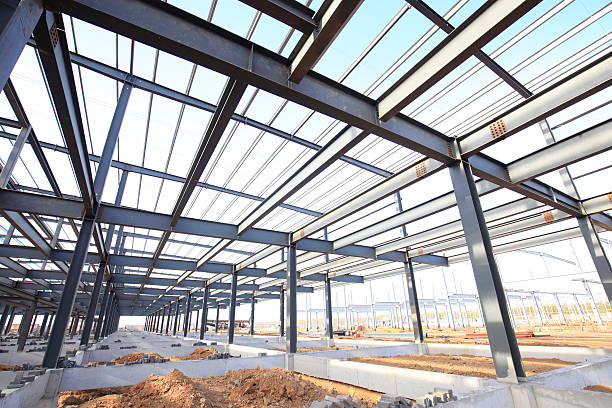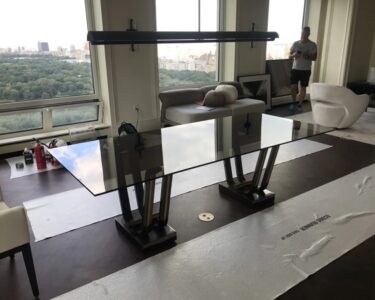Steel framing has revolutionized the construction industry, becoming a critical element in building design. The transition from traditional wood or concrete framing to steel structures has been fueled by steel’s strength, versatility, and cost-effectiveness. Steel framing provides an essential foundation for both residential and commercial buildings, offering superior durability, fire resistance, and long-term stability. This article explores the importance of steel framing, with a special focus on structural steel framing and its applications.
Understanding Steel Framing
Steel framing refers to the use of steel columns, beams, and other steel elements to create the skeletal framework of a building. It supports the weight of the structure and distributes loads efficiently across the foundation. In modern construction, steel framing is preferred for its high strength-to-weight ratio, making it capable of supporting larger loads while using less material compared to other framing types. Moreover, steel is non-combustible, offering a high degree of fire resistance, an essential factor in ensuring safety in buildings.
Steel framing is not only found in skyscrapers or industrial structures but has also become a viable option for residential projects. The adoption of steel framing in homes ensures a more secure, resilient, and sustainable structure. When compared to wood framing, steel framing offers a higher resistance to environmental factors such as termites, mold, and rot. Additionally, steel’s ability to withstand harsh weather conditions makes it an ideal material in regions prone to extreme weather events.
Structural Steel Framing: A Specialized Approach
Structural steel framing is a specialized form of steel framing, designed to withstand heavier loads and more complex structural demands. This type of framing involves the use of larger steel members, including I-beams, columns, and girders, that are engineered to support significant weight and provide stability to tall buildings or large spans. Structural steel framing is commonly used in commercial, industrial, and multi-story residential buildings, where the strength and rigidity of the frame are critical.
The design of structural steel framing incorporates advanced engineering techniques to ensure that each component is properly sized and positioned to handle the stresses of the building’s load. One of the key advantages of structural steel framing is its ability to span long distances without the need for intermediate supports. This capability allows for open, unobstructed floor plans, which are highly desirable in commercial spaces such as offices, retail centers, and manufacturing plants.
In structural steel framing, the steel members are usually pre-fabricated in a factory, allowing for quicker assembly on-site. This prefabrication process reduces construction time and minimizes the likelihood of errors, ensuring a more efficient project. Additionally, the high precision involved in the fabrication process results in a more accurate and safer structure, reducing the risk of costly modifications during construction.
Benefits of Steel Framing and Structural Steel Framing
There are numerous benefits associated with using steel framing in building construction. Some of the most notable advantages include:
- Strength and Durability: Steel is an exceptionally strong material that can support large loads without warping or bending. Unlike wood, steel framing does not shrink or expand with moisture, which helps maintain the structural integrity of the building over time.
- Fire Resistance: Steel is naturally fire-resistant, making it an ideal material for buildings where fire safety is a priority. In the event of a fire, steel framing will not catch fire or burn, providing vital protection to occupants and helping to prevent the spread of flames.
- Sustainability: Steel is a recyclable material, making it an environmentally friendly choice for construction projects. Buildings made with steel framing can be disassembled and reused at the end of their life cycle, reducing the environmental impact of construction waste.
- Cost Efficiency: Although the initial cost of steel framing may be higher than traditional materials, the long-term savings are significant. Steel framing requires less maintenance and is less prone to damage from pests or weather-related issues. Over time, this results in reduced repair and replacement costs.
- Design Flexibility: Steel framing allows for greater flexibility in architectural design. Steel’s strength allows for larger open spaces and innovative designs, which is particularly beneficial in commercial or high-rise buildings. Architects can create larger floor plans with fewer columns and supports, improving both the aesthetic appeal and functionality of the building.
Conclusion
Steel framing, particularly structural steel framing, plays an integral role in the construction of modern buildings. Its strength, fire resistance, and durability make it an ideal choice for a wide variety of structures, from homes to towering skyscrapers. The advantages of using steel framing in construction, including long-term cost savings, design flexibility, and sustainability, have made it a favored material in the industry. As the demand for more resilient and sustainable building solutions continues to grow, steel framing will undoubtedly remain a cornerstone of the construction world, supporting the creation of safe, stable, and innovative structures for generations to come.



